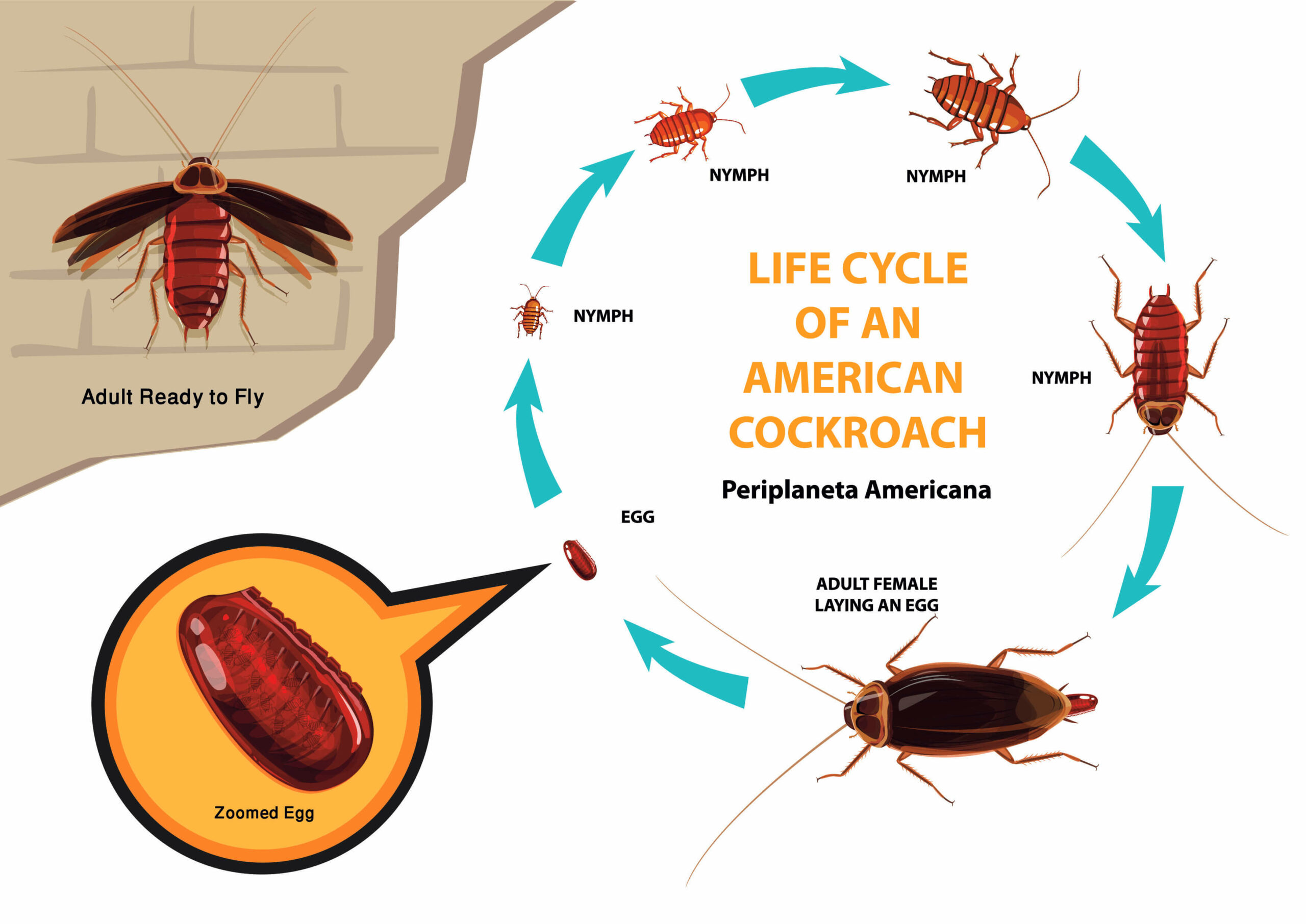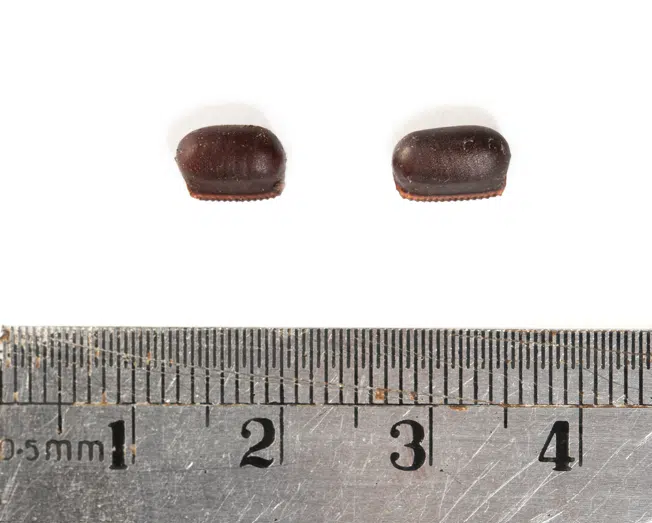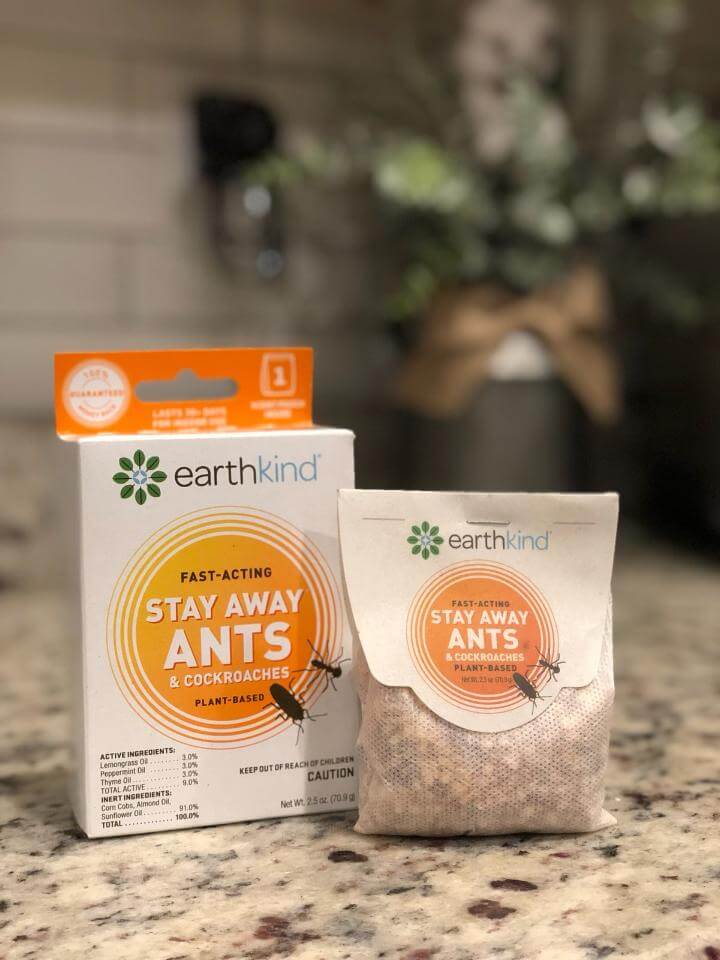Cockroach Life Cycle & Life Expectancy
By : Rita Stadler
Most homeowners dread the idea of encountering cockroaches, but many do little to actually prevent these insects from taking over. This problem often stems from a lack of knowledge surrounding these pests, their lifespan, and their preferred environments.
The cockroach life cycle is a key element of understanding this insect’s behavior, not to mention the typical amount of time it takes for minor concerns to become huge infestations.
At EarthKind, we believe that a solution is not possible until you know the realities of these insects and how their behavior plays into the need for a proactive approach. Keep reading to learn more about their life cycle and how it might impact your preferred mitigation strategies.
Stages of the Cockroach Life Cycle
When most people picture these pests, they think of the adult form of the insect. In reality, however, their typical life cycle is divided into three main stages: egg, nymph, and adult. These stages vary based on species. Here are details on what, exactly, each period entails.
Egg
Cockroach eggs can initially be found within dark-colored cases known as oothecae. The number of eggs these cases contain vary significantly from one species to the next, with some oothecae including several dozen individual eggs. Typically, several weeks pass before these eggs hatch.
Nymph
Upon hatching, the eggs become nymphs. Sometimes, these young insects are referred to as baby cockroaches. This name fails to convey just how much damage these young insects can cause.
Often, these pests spend far more time in the nymph stage than as adults. At this point, they do not have wings. Their development may depend, to some extent, on temperature. Nymphs can often survive at lower temperatures but may not finish growing into adults until it becomes warmer.
During the nymph stage, they may molt on several occasions and slowly change color. The times in which they are not actively molting are typically referred to as instars. They are not capable of sexually reproducing as nymphs but make up for lost time quickly as they reach adulthood.
Adult
The adult stage provides the opportunity to reproduce. This looks a bit different from one species to the next, but it’s common for several types of cockroaches to produce egg capsules at least once every few months — or even a few short weeks apart.
These insects often live longer as adults if they’re female. The lifespan of a cockroach can be shortened considerably if they have few food sources available and especially if they experience limited access to water.
How Long Do Cockroaches Live?
A variety of factors can determine the ‘typical’ cockroach lifespan. Access to food and water is particularly influential. If these essentials are readily available, they can potentially live for up to a full year or two — or even longer. During that time, they can produce several generations, prompting hundreds of offspring. As such, it doesn’t take long for an infestation that seemingly consists of just a few insects to explode.
Keep in mind that lifespans differ dramatically from one species of cockroach to the next. To clarify, we’ve highlighted what, exactly, you can expect in terms of lifespan for several of the most common types of cockroaches. Along the way, you’ll learn more about these species, where they thrive, and hazards they might present.
German Cockroach
Picture a ‘stereotypical’ cockroach, and the German variety will likely come to mind. As the most common cockroaches associated with household infestations, these insects struggle to survive away from humans.
The German cockroach’s lifespan is generally short, but this largely depends on temperature and access to food. If allowed to develop at room temperature, for example, they will remain nymphs for about sixty days. In total, their lifespan is often as short as 100 days. Because they can develop and reproduce so quickly, their infestations are often exponential in nature and must therefore be addressed as proactively as possible.
American Cockroach
The American species are far slower to develop than their German counterparts, but they also tend to live longer. Typically, they spend between six and eight weeks as eggs, followed by an additional six months or even a full year as nymphs. After this, they may live for an additional year as adults. During that time, an adult female cockroach may produce an additional 150 insects.
Oriental Cockroach
Sometimes referred to as water bugs, oriental cockroaches strongly prefer moist locations. This can play into their lifespan. Depending on their environment, they may take up to a year to grow from nymphs to adults, undergoing up to seven molts along the way. As adults, however, they may live for just one month or as long as half a year.
Asian Cockroach
Indoor infestations are mercifully rare for this type, which are far more frequently found in mulched areas such as gardens. They resemble the German variety, however, and tend to follow a similarly brief lifespan.
It takes nymphs between 60 and 70 days to reach adulthood. This is followed by a lifespan of over 100 days for females. Males live approximately half as long.
Brown-Banded Cockroach
As with many of the others, the lifespan for the brown-banded variety primarily depends on the temperature in the environments in which they shelter. At higher temperatures, the egg and nymph stages last a combined eighty days, followed by an additional eighty days of adulthood. At lower temperatures, they may spend more time as eggs or nymphs — and less time as adults.
Smokybrown Cockroach
Known primarily for their large size, smokybrown cockroaches are typically found outside — primarily around leaf litter. As such, they sometimes appear in attics or gutters. They may also survive in sewers. If they’re found indoors, it’s typically because they need to take shelter from cold weather.
From the egg to adult stage, their life cycle spans nearly one year. As adults, these insects may live between two and six months.
Keep Your Home Cockroach-Free
Your pest management efforts will prove far more effective if you understand what, exactly, attracts cockroaches and which types of environments they find most appealing. This knowledge will also help you detect them early on. From there, you can make targeted changes to make your home as inhospitable as possible. Over time, this will produce far better results than using a reactive approach that relies exclusively on toxic products or professional extermination.
Early action is always preferable, as it prevents minor issues from turning into full-on infestations. If the initial signs of cockroaches aren’t addressed quickly, these insects could cause major damage throughout your home. Furthermore, they can function as allergens or even trigger asthma attacks.
You can keep your home and your loved ones safe by taking simple steps such as using the botanical products from EarthKind. Our Stay Away® Ants & Cockroaches deterrent works for ridding your home of both types of pests. These plant-derived control pouches can simply be placed wherever you’ve observed insect activity or anywhere you hope to prevent future infestations. They produce smells that humans find pleasant but cockroaches will want to avoid.
Are you ready to get rid of cockroaches? Contact the team at EarthKind today to learn more about how our deterrent products work — and to discover how our pest control methods allow you to prevent infestations in an effective way that also helps to preserve nature’s ecosystem.









 day
day